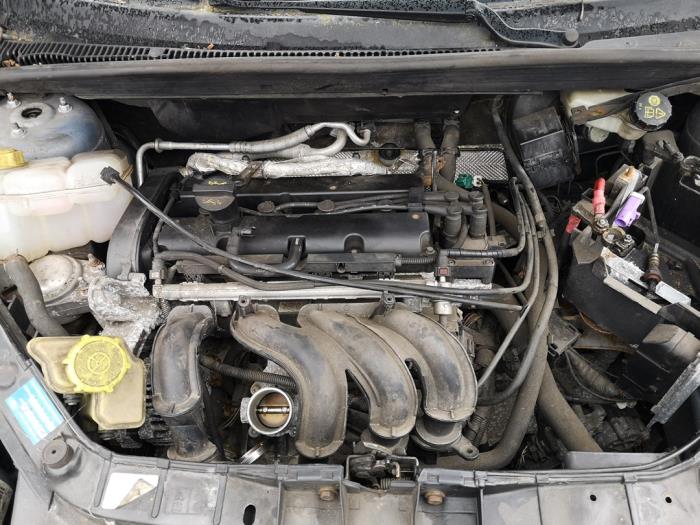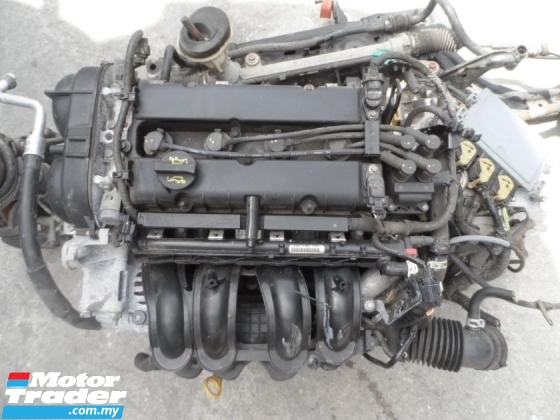Expert Tips for Optimizing Your Ford Fiesta Engine Efficiency
Expert Tips for Optimizing Your Ford Fiesta Engine Efficiency
Blog Article
Discovering the Development of Engines: From Traditional Designs to Modern Marvels
From the preliminary steam engines that powered the Industrial Transformation to the introduction of interior combustion engines that transformed flexibility, each phase has actually added to greater efficiency and capacity. As we take a look at these milestones, one should consider exactly how the future of engine design may unfold, challenging our understandings of power and effectiveness.
The Birth of Engine Innovation
The advent of engine innovation noted a critical moment in human development, changing energy conversion and transportation. The earliest engines emerged from the demand to harness mechanical power for functional usage, leading to the growth of devices that transformed numerous power forms right into motion (ford fiesta engine).
The development of the interior combustion engine and the development of the steam engine militarized an extensive shift in industrial capabilities. These engines not just improved effectiveness but also increased the extent of human movement, making it possible for extraordinary transport possibilities. The very early prototypes laid the groundwork for the mechanized globe, promoting the surge of sectors and improving social frameworks.
As engine designs developed, they integrated innovative products and advanced design concepts, leading the way for modern-day growths - ford fiesta engine. The birth of engine innovation stired up a ruthless quest of performance and power, establishing the stage for the dynamic advancement of transport and commercial machinery that would adhere to
Heavy Steam Engines and Their Influence

The vapor engine's effect was specifically evident in the transportation field (ford fiesta engine). Steam-powered engines facilitated the quick activity of products and people throughout substantial ranges, successfully diminishing the geographical barriers that had actually previously prevented profession and communication. Steamships revolutionized maritime traveling, enabling for quicker and more trusted crossings of rivers and seas.
In sector, heavy steam engines powered factories, making it possible for mass manufacturing and the rise of city centers as hubs of financial task. Steam modern technology promoted technologies in design and production procedures, laying the foundation for future developments in engine style.
The Increase of Internal Burning
Frequently overshadowing steam power, the rise of inner burning engines marked a transformative shift in transport and sector during the late 19th and early 20th centuries. The advancement of these engines, characterized by their ability to burn gas within the engine itself, enabled greater effectiveness and power compared to standard heavy steam engines. Introducing developers such as Nikolaus Otto and Rudolf Diesel played essential duties in refining engine designs, bring about extensive adoption in cars, boats, and commercial machinery.
The interior burning engine's compact dimension and relatively light-weight nature helped with the appearance of individual cars, transforming individual wheelchair and reshaping city landscapes. By allowing faster traveling and the effective transportation of products, these engines catalyzed financial development and fostered globalization. The adaptability of gas options, including fuel and diesel, further enhanced their allure, enabling varied applications across numerous sectors.
Despite the ecological worries that would certainly later develop, the preliminary appeal of interior burning technology stocked its transformative possibility. As society accepted this development, the structure was laid important link for modern transportation systems, developing inner combustion engines as a foundation of commercial development and day-to-day live throughout the 20th century.
Innovations in Engine Efficiency
As interior burning engines came to be integral to transportation and industry, the focus moved in the direction of boosting their efficiency to satisfy expanding demands for efficiency and sustainability. Advancements in engine layout, product scientific research, and technology have considerably added to this evolution.
One significant improvement is the advancement of turbocharging, which permits raised air consumption, resulting in more complete gas combustion and enhanced power outcome without expanding engine dimension. Additionally, variable valve timing systems have been carried out to enhance engine performance across different RPM varieties, consequently improving gas performance.
The usage of innovative gas shot modern technologies, such as direct injection, has additionally played a critical role. This technique permits even more specific control over the fuel-air blend, promoting better combustion and reducing exhausts. Additionally, light-weight products, consisting of aluminum and composite parts, have actually been taken on to decrease overall engine weight, leading to boosted effectiveness.
These innovations show a wider pattern within the automobile market, where the synergy in between design technology and environmental considerations drives the ongoing quest for higher efficiency in internal combustion engines. Consequently, modern-day engines are now extra powerful, cleaner, and reliable than ever before, leading the way for an extra lasting future in transport.
The Change to Electric Power
With growing concerns over ecological influence and nonrenewable fuel source dependence, the automobile sector is experiencing a considerable change towards electrical power. This transition is driven by a mix of technological advancements, regulative stress, and altering customer preferences. Electric lorries (EVs) provide an engaging option to conventional internal burning engines, boasting lowered greenhouse gas emissions and reduced operating expense.
The rise of battery innovation has actually been a video game changer, with lithium-ion batteries becoming a lot more reliable and affordable. Boosted energy thickness and faster charging capacities have actually made EVs a lot more sensible for daily use. Moreover, federal governments worldwide are implementing incentives and setting enthusiastic targets for terminating nonrenewable fuel source lorries, consequently speeding up the fostering of electric power.
Significant automakers are investing greatly in r & d, leading to the introduction of a diverse Recommended Site variety of electrical models. This includes not only automobile yet also commercial vehicles and public transport solutions. As charging infrastructure expands and battery innovation remains to boost, the change to electric power is poised to reshape the auto landscape, advertising sustainability and technology in the years ahead. The future of transport is electrical, and the momentum is undeniable.
Conclusion
The here are the findings advancement of engine technology represents a substantial trajectory of advancement that has actually profoundly influenced transport and market. From the foundational vapor engines to the transformative inner combustion engines, each growth has contributed to boosted wheelchair and financial development.

Report this page